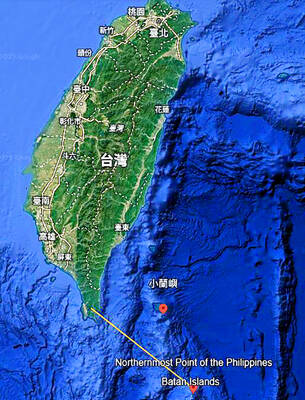Efforts to modernize both state and society started during the 19th century. Initial reforms targeted limited institutions, such as the Armed Forces.
One of the first things to go was the traditional marching band of the Ottoman army (Mehter Takimi), the first of its kind in Europe, to be replaced by a modern, western one. Western forms of art and literature penetrated the culture and continued to flourish alongside classical and folk art, music, and literature.

The parliamentary system was also introduced more than a century ago. Following the Turkish Revolution at the end of World War I, reforms to achieve fundamental and broadly based social and institutional change were initiated by Mustafa Kemal Ataturk, the revolutionary leader and the first president of the Republic of Turkey. Secularism, and the legal protection of the democratic rights and responsibilities of all citizens, are perhaps the most important of these reforms.
One of the proudest achievements of the Republic was the establishment of women's rights in the new social order. The Turkish woman has been exalted symbolically throughout history as the mother figure and pillar of the family. Since Ataturk's reforms, women's role in social, political and economic life has expanded dramatically.
Every social and institutional change eventually leaves its mark on the landscape. The reforms of the first half of the 20th century put Turkey on a course of accelerated modernization. Careful measures ensured that culture and traditions continue to live and evolve. Although the changes in the landscape were well orchestrated and significant, they were not on the magnitude of the changes that are occurring today.
Starting with the highway program of the 1950's and culminating with the free market reforms of the 1980's, unbridled transformation of the landscape has taken place. The country has been electrified by the vitality of a young population, that is ready to participate in a booming economy and its endless possibilities in the new world order.
The generation of farmers and soldiers who used to refer to the government as "Father" (Devlet Baba), has been replaced by a "can-do" generation of entrepreneurs. The possibility of breaking all ties with both the past and the landscape, which the future depends on, has never been as real as it is today.
For example, the ongoing process of agricultural industrialization is taking away the apricots and cherries with the rest of the Anatolian natives, along with the happy chickens, sheep and cows, all marching in a parade which will eventually transform them into tasteless uniformity and miserable existence.
Our hopes lie with the wise Turkish woman, who knows better and listens to her palate, searching out vegetables raised without hormones at the local market. But will she be able to pass this wisdom on to her ambitious daughter who prefers wearing Levis?
The Turkish people are known for their ingenuity, quick wit and ability to adapt. In the current climate of democracy and local involvement, it is more than likely that the Turkish landscape will continue to reflect a harmonious and sustainable relationship with its people.

SECURITY: As China is ‘reshaping’ Hong Kong’s population, Taiwan must raise the eligibility threshold for applications from Hong Kongers, Chiu Chui-cheng said When Hong Kong and Macau citizens apply for residency in Taiwan, it would be under a new category that includes a “national security observation period,” Mainland Affairs Council (MAC) Minister Chiu Chui-cheng (邱垂正) said yesterday. President William Lai (賴清德) on March 13 announced 17 strategies to counter China’s aggression toward Taiwan, including incorporating national security considerations into the review process for residency applications from Hong Kong and Macau citizens. The situation in Hong Kong is constantly changing, Chiu said to media yesterday on the sidelines of the Taipei Technology Run hosted by the Taipei Neihu Technology Park Development Association. With

CARROT AND STICK: While unrelenting in its military threats, China attracted nearly 40,000 Taiwanese to over 400 business events last year Nearly 40,000 Taiwanese last year joined industry events in China, such as conferences and trade fairs, supported by the Chinese government, a study showed yesterday, as Beijing ramps up a charm offensive toward Taipei alongside military pressure. China has long taken a carrot-and-stick approach to Taiwan, threatening it with the prospect of military action while reaching out to those it believes are amenable to Beijing’s point of view. Taiwanese security officials are wary of what they see as Beijing’s influence campaigns to sway public opinion after Taipei and Beijing gradually resumed travel links halted by the COVID-19 pandemic, but the scale of

A US Marine Corps regiment equipped with Naval Strike Missiles (NSM) is set to participate in the upcoming Balikatan 25 exercise in the Luzon Strait, marking the system’s first-ever deployment in the Philippines. US and Philippine officials have separately confirmed that the Navy Marine Expeditionary Ship Interdiction System (NMESIS) — the mobile launch platform for the Naval Strike Missile — would take part in the joint exercise. The missiles are being deployed to “a strategic first island chain chokepoint” in the waters between Taiwan proper and the Philippines, US-based Naval News reported. “The Luzon Strait and Bashi Channel represent a critical access

Pope Francis is be laid to rest on Saturday after lying in state for three days in St Peter’s Basilica, where the faithful are expected to flock to pay their respects to history’s first Latin American pontiff. The cardinals met yesterday in the Vatican’s synod hall to chart the next steps before a conclave begins to choose Francis’ successor, as condolences poured in from around the world. According to current norms, the conclave must begin between May 5 and 10. The cardinals set the funeral for Saturday at 10am in St Peter’s Square, to be celebrated by the dean of the College